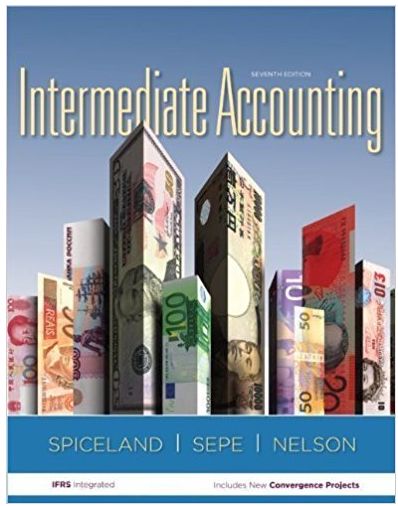The following questions are adapted from a variety of sources including questions developed by the AICPA Board
Question:
The following questions are adapted from a variety of sources including questions developed by the AICPA Board of Examiners and those used in the Kaplan CPA Review Course to study balance sheet presentation, financial disclosures, and liquidity ratios while preparing for the CPA examination. Determine the response that best completes the statements or questions.
1. In Merf’s April 30, 2013, balance sheet, a note receivable was reported as a noncurrent asset and the related accrued interest for eight months was reported as a current asset. Which of the following descriptions would fit Merf’s receivable classification?
a. Both principal and interest amounts are due on August 31, 2013, and August 31, 2014.
b. Principal is due August 31, 2014, and interest is due August 31, 2013, and August 31, 2014.
c. Principal and interest are due December 31, 2013.
d. Both principal and interest amounts are due on December 31, 2013, and December 31, 2014.
2. Mill Co.’s trial balance included the following account balances at December 31, 2013:
Accounts payable $15,000
Bond payable, due 2014 22,000
Dividends payable 1/31/14 8,000
Notes payable, due 2015 20,000
What amount should be included in the current liability section of Mill’s December 31, 2013, balance sheet?
a. $45,000
b. $51,000
c. $65,000
d. $78,000
3. Which of the following would be disclosed in the summary of significant accounting policies disclosure note?
-1.png)
4. How are management’s responsibility and the auditor’s report represented in the standard auditor’s report?
-2.png)
5. At December 30, Vida Co. had cash of $200,000, a current ratio of 1.5:1, and a quick ratio of .5:1. On December 31, all the cash was used to reduce accounts payable. How did this cash payment affect the ratios?
-3.png)
6. Zenk Co. wrote off obsolete inventory of $100,000 during 2013. What was the effect of this write-off on Zenk’s ratio analysis?
a. Decrease in the current ratio but not the quick ratio.
b. Decrease in the quick ratio but not in the current ratio.
c. Increase in the current ratio but not in the quick ratio.
d. Increase in the quick ratio but not in the current ratio.
Beginning in 2011, International Financial Reporting Standards are tested on the CPA exam along with U.S. GAAP. The following questions deal with the application of IFRS.
7. Noncurrent assets must be reported before current assets in a balance sheet reported by a company using:
a. IFRS.
b. U.S. GAAP.
c. Both U.S. GAAP and IFRS.
d. Neither U.S. GAAP nor IFRS.
8. Total liabilities of a company’s reportable segments must be reported when the company provides supplemental information on operating segments using:
a. IFRS.
b. U.S. GAAP.
c. Both U.S. GAAP and IFRS.
d. Neither U.S. GAAP norIFRS.
Generally Accepted Accounting Principles (GAAP) is the accounting standard adopted by the U.S. Securities and Exchange Commission (SEC). While the SEC previously stated that it intends to move from U.S. GAAP to the International Financial Reporting Standards (IFRS), the... Balance Sheet
Balance sheet is a statement of the financial position of a business that list all the assets, liabilities, and owner’s equity and shareholder’s equity at a particular point of time. A balance sheet is also called as a “statement of financial...
Step by Step Answer:

Intermediate accounting
ISBN: 978-0077647094
7th edition
Authors: J. David Spiceland, James Sepe, Mark Nelson





